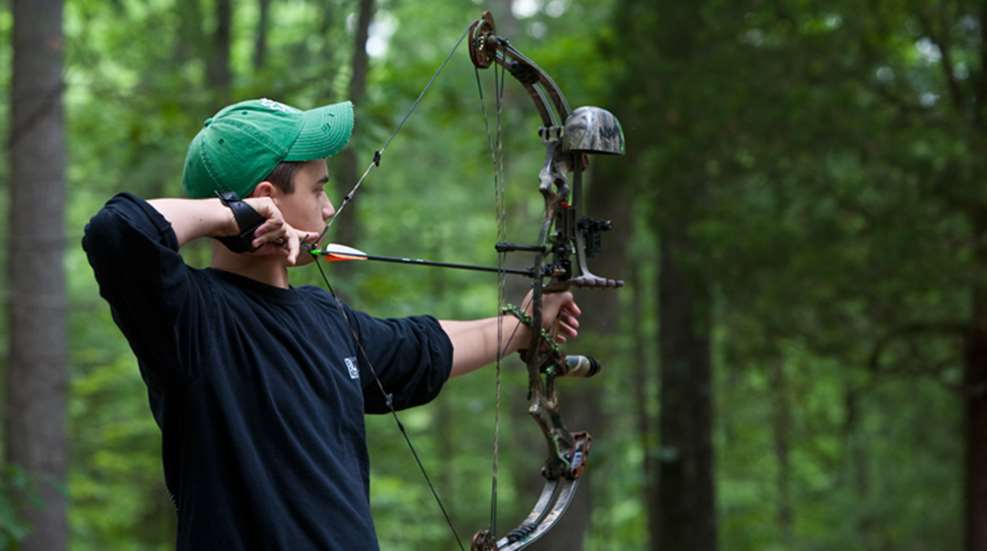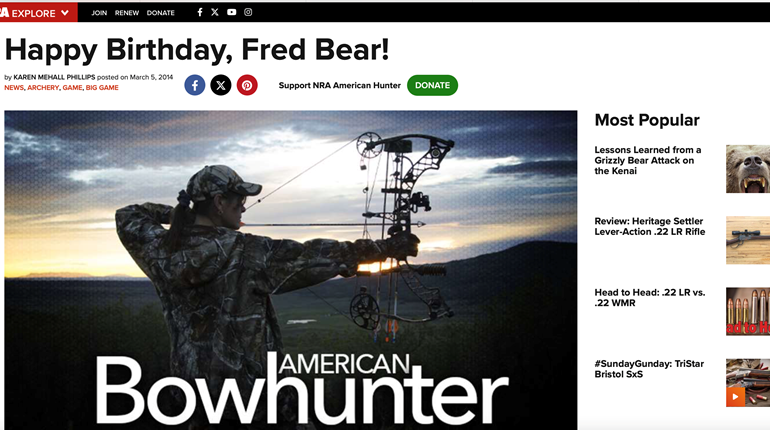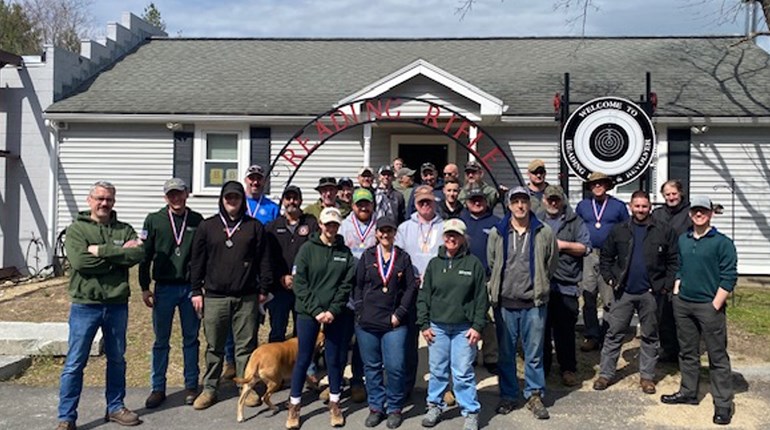
You’ve been practicing since Christmas with your new bow, and you can consistently hit a 6-inch target at 30 yards. Fall will be here sooner than you think, and you think you’re ready to bowhunt for the first time. But are you? Read these five tips to make sure you are safe, accurate and prepared with your bow in a tree stand this October.
1. Practice with broadheads
Arrows tipped with razor-sharp “broadheads” used for hunting usually fly differently than the dull field-points used for target shooting. So, a couple weeks before the season, install a broadhead that you intend to use for hunting on an arrow. Use a “practice blade” if one came with the broadheads you purchased. (A practice blade is an arrowhead that is exactly like the broadhead that you will hunt with, except the blades are dull.) If you don’t have a practice blade, select one broadhead and install it on an arrow. This will be your practice blade; mark it so you will never hunt with it. This arrow and the arrows you select to hunt with should be identical, and they should be in near-perfect condition. Shoot into a broadhead-approved target (don’t shoot into hay bales with a broadhead, or it will be lost) to make sure your sight pins are zeroed for the broadhead. If you find that they are off, correct the pins. Lastly, install three to six sharp broadheads on your hunting arrows and make sure they are safely covered in your quiver. Always use a broadhead wrench, never your bare fingers, to install broadheads.
2. Practice shooting from your tree stand
If you hunt from a tree stand, find a tree that you can use, and practice getting in and out of the treestand safely. Practice using your safety harness while climbing and sitting in the tree. It’s much easier to figure this out in the daytime before the season, rather than on opening morning. Once you are sitting in your tree stand with your safety belt properly attached, pull your bow up with a pull rope. Consider where you should store your quiver if you plan to take it off to hunt. Use screw-in hooks and figure out where they should go in order for you to hang your gear so it is accessible, yet out of the way.
Next, nock an arrow, stand up, draw your bow and practice shooting at a target on the ground. Due to the decreased effect of gravity while shooting down, your arrow will impact slightly higher than normal. You can either adjust your sights (if you plan to hunt at the same height) or remember to aim an inch or two lower than you would if you were shooting from the ground. Finally, practice drawing and shooting your bow while seated. If you find you can’t shoot well while seated, always stand up to shoot.
3. Practice in your hunting clothes
Before climbing up to practice shooting out of your tree stand, dress up in the exact clothes that you plan to hunt in, including your jacket, facemask, gloves and hat.
Take note of any clothing that gets in the way of shooting. You might find that face paint is easier to shoot in than wearing a facemask; you might cut the trigger finger out of your glove so you can feel your release; you might shorten the length of your hat’s bill so it doesn’t interfere with the bowstring; or you might find that you need to wear an armguard to hold your jacket sleeve away from the bowstring. Any of these things, left unchecked, can result in a bad shot and a hunter’s worst nightmare—a wounded animal.
4. Clear shooting lanes at your stand location
A month or more before the season, after you’ve located the tree or site where you want to place your stand, install it on the tree and climb up. Make sure your ladder is secured tightly, or if you are using treesteps, that they are in the tree securely and in proper position. Cut any limbs that prevent you from climbing. Then, using your safety harness, sit in your stand like you would if you were hunting.
With the help of a partner, point out limbs or brush that would likely impede the flight of your arrow. You’ll need pruning shears or a saw for this task. For hard-to-reach limbs, attach a saw to a long pole to cut them. Don’t clear out too much—deer like cover and might avoid the area if it’s too open—but designate from one to three “shooting lanes” where you can shoot accurately if a deer walks by.
Next, measure the distance from your tree to various objects such as trees, bushes or rocks. Remember these distances to aid in judging range. Finally, mark your tree clearly with orange tape or reflective tacks so you can find it in the dark.
5. Organize your gear
Make a checklist of things you might need while bowhunting, then organize it in a way so that frequently used items are safe and easy to access. Of course you need a compass, a knife and a pull rope, but you also need an Allen wrench for your bow in case something comes loose. For example, place your flashlight where you can find it in the dark. You’ll need marking tape if you shoot a deer, but it can go in the bottom of your pack. Your pull-up rope, game calls and rangefinder should be easy to get without making noise.
Before packing, take into consideration where you are hunting. If you are in wilderness and far from people or help, you might consider bringing more gear. But if you are in a small woodlot not far from a house, your hunting partner or a vehicle, you really don’t need more than the basics. Bringing too much gear will only complicate things while in your tree stand.






































